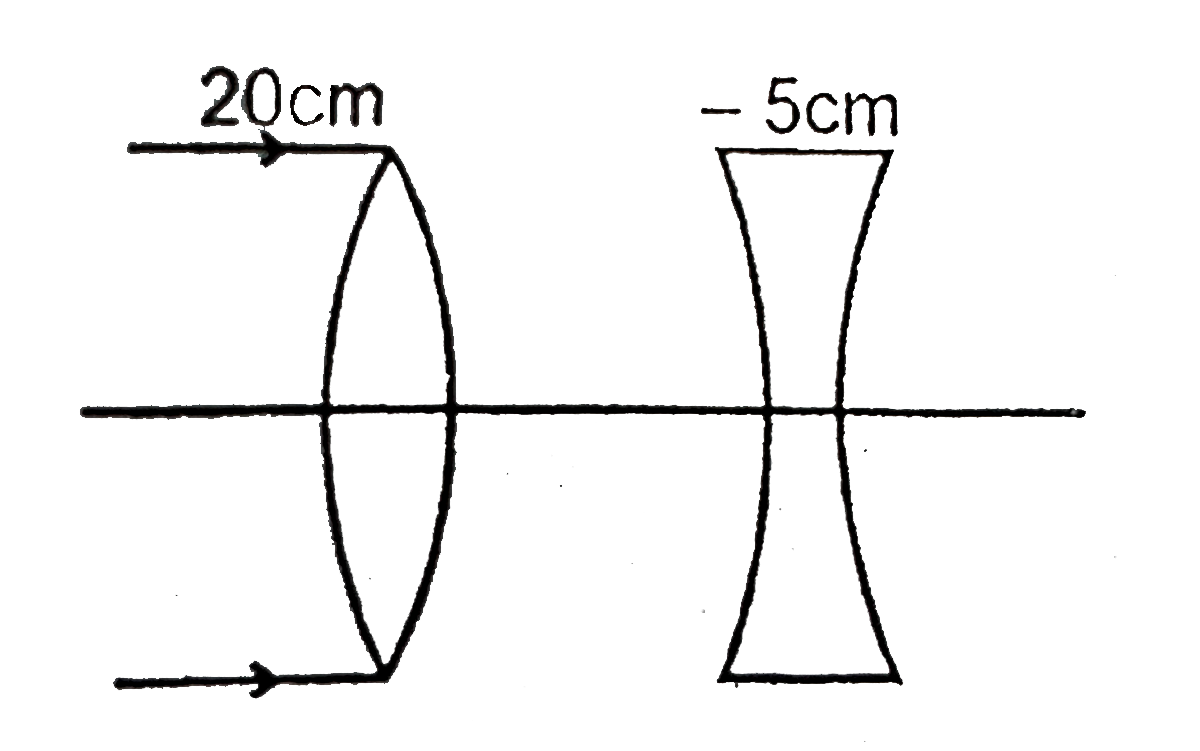Which of the following can make a parallel beam of light from a point source is incident on it ?
Concave mirror as well as convex lens
Convex mirror as well as concave lens
Two plane mirrors placed at 90∘C to each other
Concave mirror as well as concave lens
The correct Answer is:A
A ray passing through the principal focus of a concave mirror or concex lens, after reflection/refraction, will emerge parallel to the principal axis.

Topper's Solved these Questions
- LIGHT : REFLECTION AND REFRACTIONBook:NCERT EXEMPLAR ENGLISHChapter:LIGHT : REFLECTION AND REFRACTIONExercise:Short Answer Type Questions
Explore 10 Videos
- LIGHT : REFLECTION AND REFRACTIONBook:NCERT EXEMPLAR ENGLISHChapter:LIGHT : REFLECTION AND REFRACTIONExercise:Long Answer Type Questions
Explore 9 Videos
- ELECTRICITYBook:NCERT EXEMPLAR ENGLISHChapter:ELECTRICITYExercise:Short Answer Type Questions
Explore 17 Videos
- MAGNETIC EFFECTS OF ELECTRIC CURRENT Book:NCERT EXEMPLAR ENGLISHChapter:MAGNETIC EFFECTS OF ELECTRIC CURRENT Exercise:LONG ANSWER TYPE QUESTIONS
Explore 8 Videos
Similar Questions
Knowledge Check
Which of the following is correct for light diverging from a point source ?
AThe intensity decreases in proporation for the distance squared.BThe wavefront is parabolic.CThe intensity at the wavelength does not depend on the distance.DNone of these.
A concave mirror is used as a reflector in torches, head lights of automobiles etc, to obtain a parallel beam of light. State the position of the source of light on the principal axis to obtain the parallel beam.
View SolutionIn a dark room, a parallel beam of light falls on a plane mirror and another parallel beam of light falls on a white wall. The light reflected by the mirror can be seen only in a certain direction, but the reflected light from the wall can be seen from anywhere. Give reason.
View SolutionA parallel beam of light falls on a solid tranparent sphere.

Q. Which is corret?
View SolutionA convex lens of focal length 20cm and a concave lens of focal length f are mounted coaxially 5cm apart. Parallel beam of light incident on the convex lens emerges from the concave lens as a parallel beam. Then, f in cm is
View SolutionIn the figure shown a converging lens and a diverging lens of focal lengths 20cm and -5cm respectively are separated by a distance such that a paralel beam of light of intensity 100 wa/m2 incident on the converging lens comes out as parallel beam from the diverging lens. Find the intensity of the outgoing beam in wa/m2

View SolutionL is a lens such that a parallel beam of light I ncident on it, after refraction, converges to a point at a distance x from it and M is a mirror such that a parallel lbeam of light incident on it, after reflection, converges to a point at a distance y from it. Now the lens L and mirror M are placed at a distan 2(x+y) from each other. An object of size 2 cm is kept infront of lens at a distance 2x from it. Find the nature, position , and size of the image that willl be seen by an observer looking toward the mirror through the lens.

View SolutionA prism is made of glass of unknown refractive index. A parallel beam of light is incident on a face of the prism. By rotating the prism, the minimum angle of deviation is measured to be 40∘. What is the refractive index of the prism ? If the prism is placed in water (μ=1.33), predict the new angle of minimum deviation of the parallel beam. The refracting angle of prism is 60∘.
View Solution

